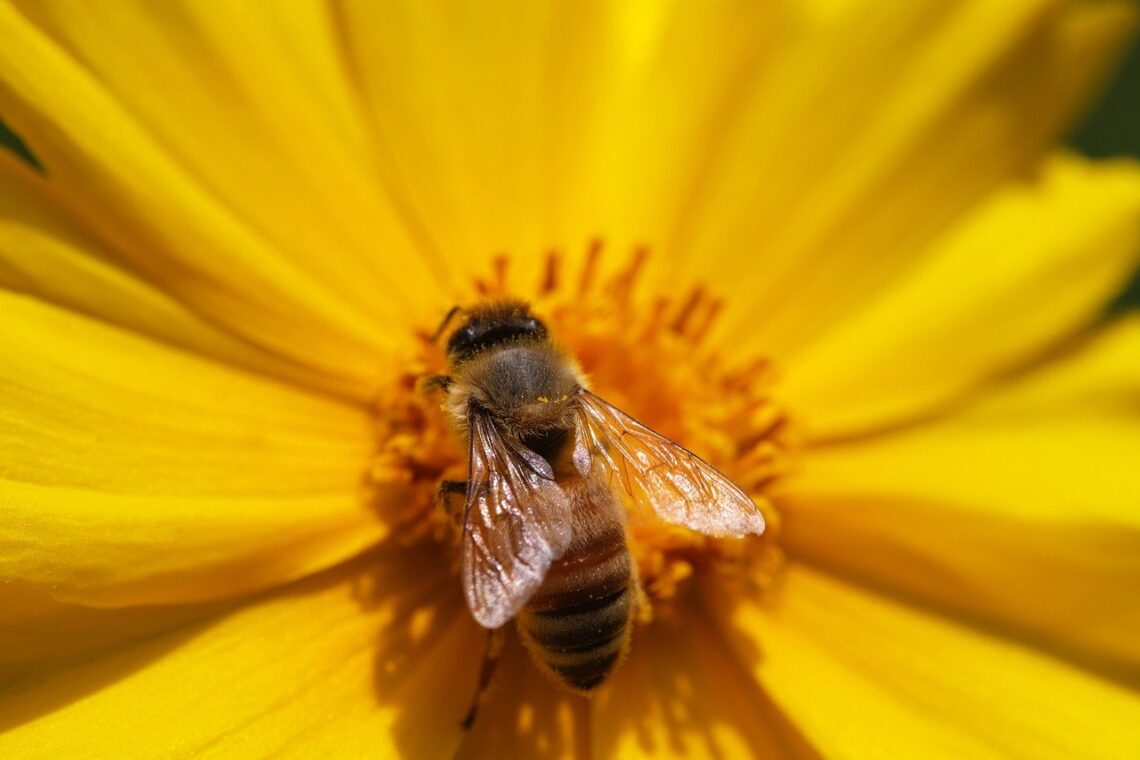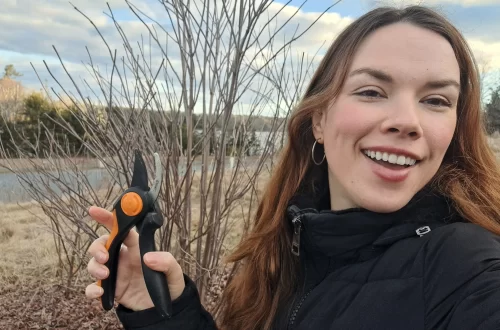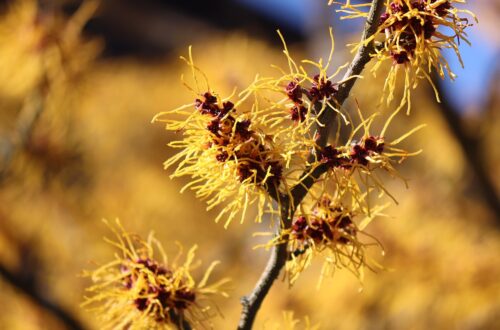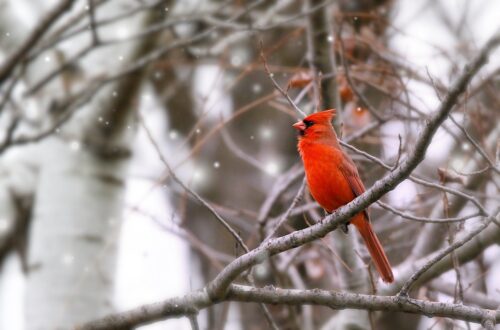Looking for flowers for fall gardens? These fall perennials and annuals are the best choices for pollinators!
Fall flowers provide essential support for pollinators before they hibernate or migrate south for the winter. But while it’s relatively easy to find pollinator plants that bloom in spring and summer, tracking down flowers for fall gardens can be a bit trickier. To help you out, here’s a list of the best fall garden plants to grow for pollinators, plus a few flowering bulbs that you can plant right now to support pollinators in spring!
Affiliate disclosure: As an Amazon Associate, I may earn commissions from qualifying purchases.
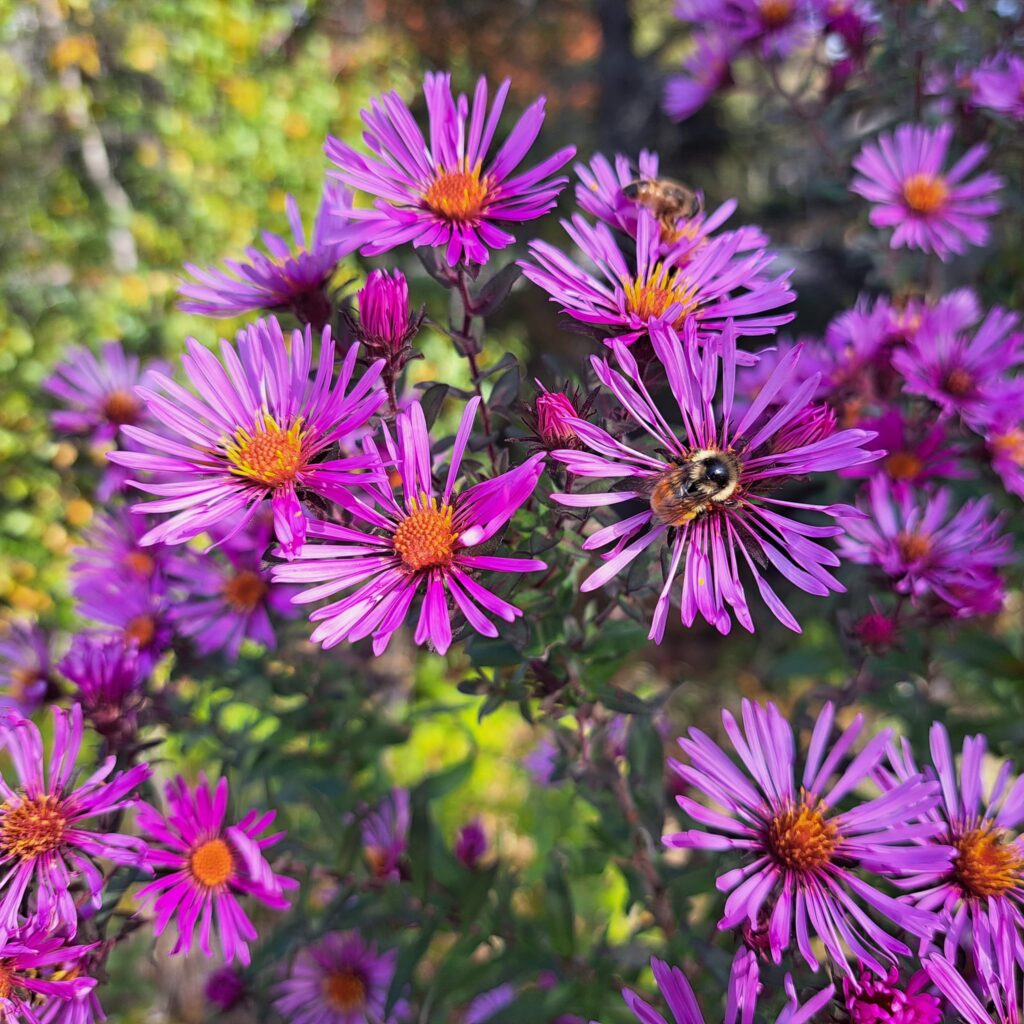
1. Asters
If you’re on the hunt for perennials to plant in fall, look no further than asters. North America has over 150 native species of asters, including the showy New England aster and the shade-loving wood aster. With all that variety, you can find an aster to suit almost any garden and these plants can continue to flower (and feed pollinators) through October and beyond!
Light needs: Full sun to part shade (depending on variety)
Water needs: Average
Grow zone: 3 to 8, most varieties
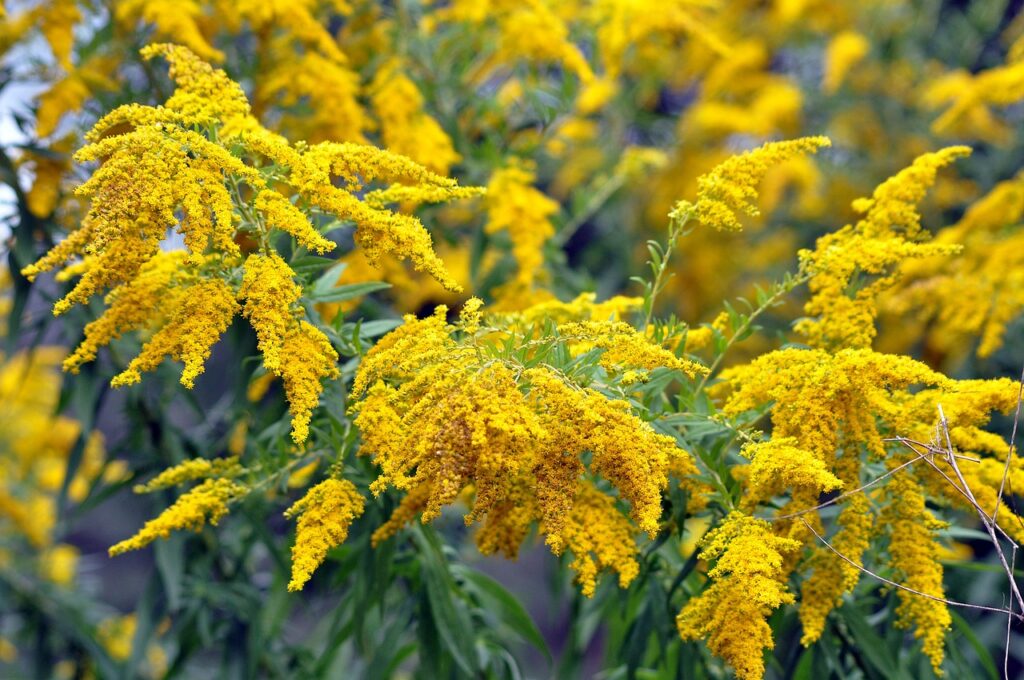
2. Goldenrod
Anyone who’s ever read Robin Wall Kimmerer’s classic Braiding Sweetgrass knows that asters and goldenrod grow well together. These two plants have very similar care needs and asters’ purple and pink blooms complement the rich yellows of goldenrod beautifully – both in the garden and in cut flower arrangements. Although goldenrod is often confused with the sneeze-producing ragweed, goldenrod is not associated with seasonal allergies.
Light needs: Full sun
Water needs: Average to low
Grow zone: 3 to 9, most varieties
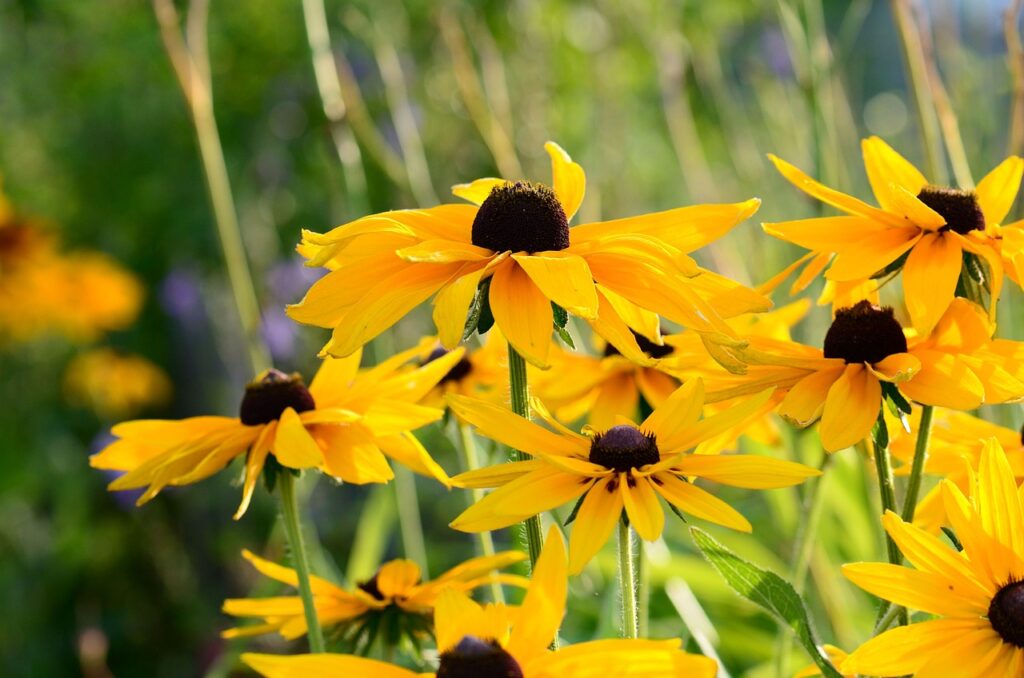
3. Black-Eyed Susan
Although black-eyed Susan’s flowering peaks around mid-summer, these low maintenance plants can bloom through early autumn. Even after black-eyed Susan stops flowering, these pretty plants provide a wealth of seeds for seed-eating birds like finches. If you have extra flowers, black-eyed Susan makes a fantastic cut flower too.
Light needs: Full sun
Water needs: Average
Grow zone: 3 to 9
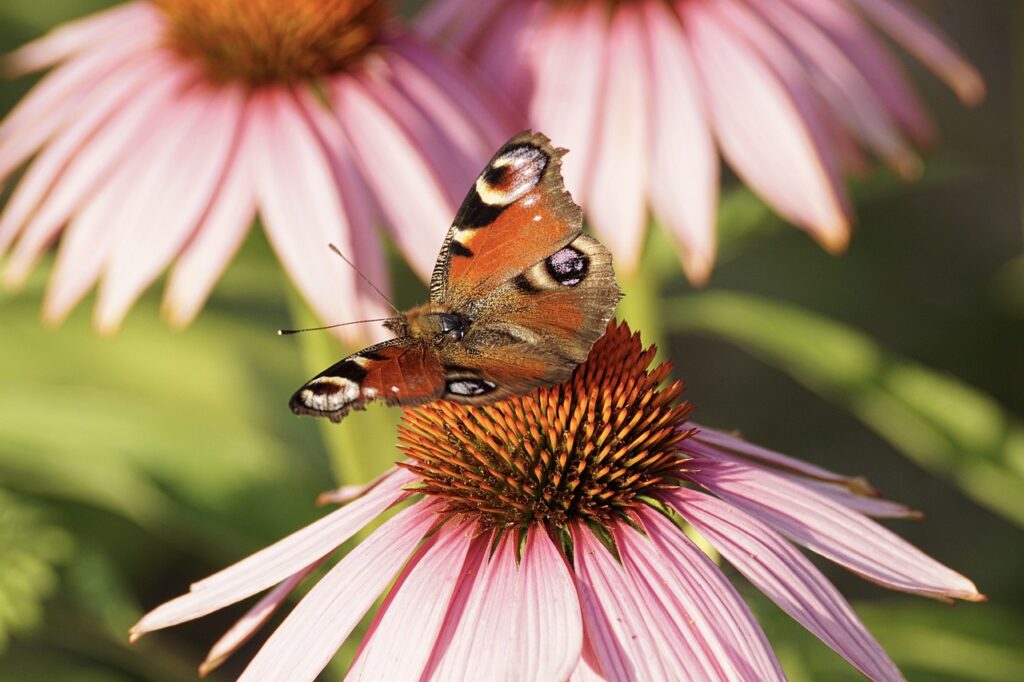
4. Coneflower
Coneflowers or echinacea are classic fall flowers for pots and planters, but you can also grow these beauties right in the garden. Although purple coneflowers are, perhaps, the most famous, there are other native North American coneflowers, like the prairie coneflower. Grow these plants in a sunny spot with well-draining soil and leave the old flowers in place after they fade to attract birds!
Light needs: Full sun
Water needs: Average
Grow zone: 3 to 9, most varieties
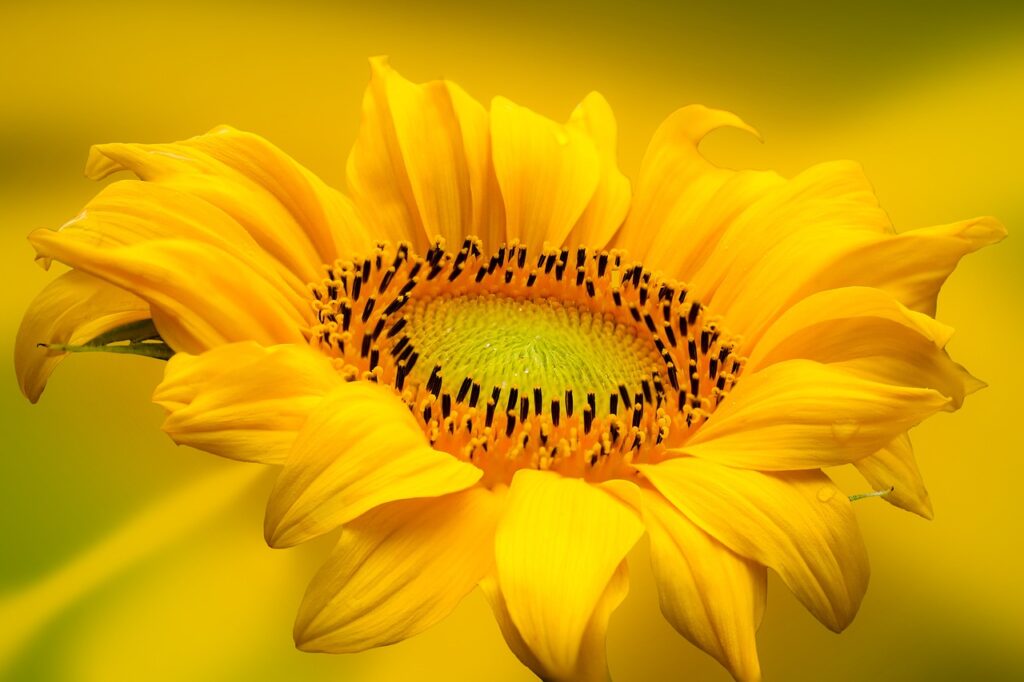
5. Sunflowers
Both wild and cultivated sunflowers benefit fall pollinators. But if you keep a native plant garden, look for native sunflower varieties, like the woodland sunflower! Some dwarf sunflowers are small enough to grow in fall window boxes, while massive sunflowers, like the ‘Mammoth Grey Stripe’ sunflower, can draw the eye from a distance.
Light needs: Full sun to part shade (depending on variety)
Water needs: Average
Grow zone: 4 to 9, most varieties
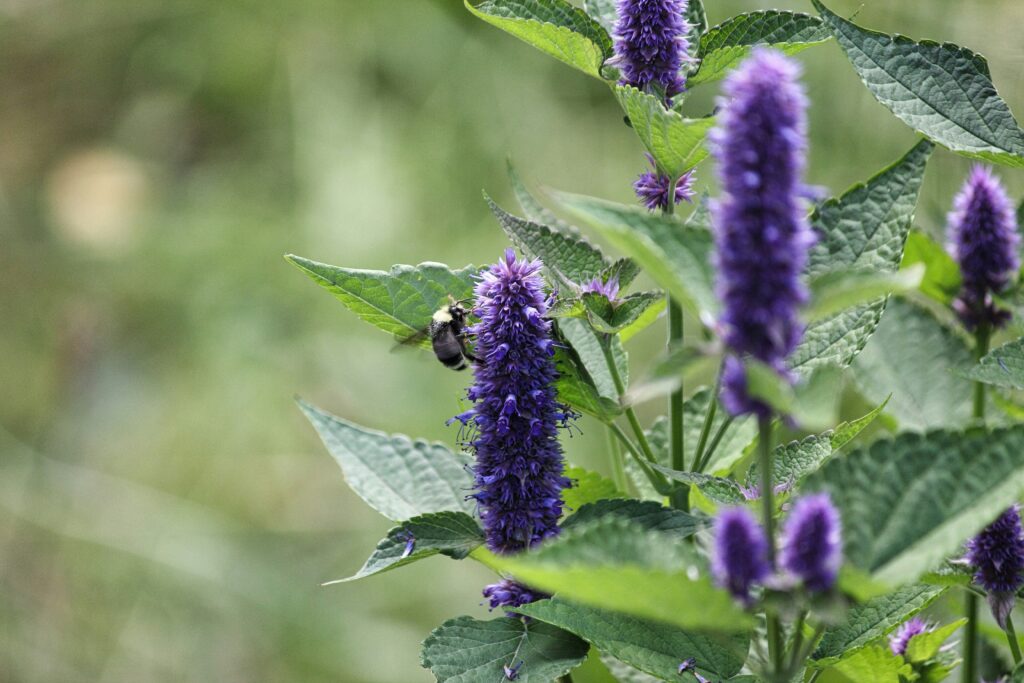
6. Anise Hyssop
Anise hyssop is a bee favorite, but its purple flower spikes attract other pollinators too. While these Midwestern natives are commonly grown as ornamentals, their leaves and flowers are also edible and have a delicious, licorice-like flavor!
Light needs: Full sun to part shade
Water needs: Average to low
Grow zone: 3 to 8
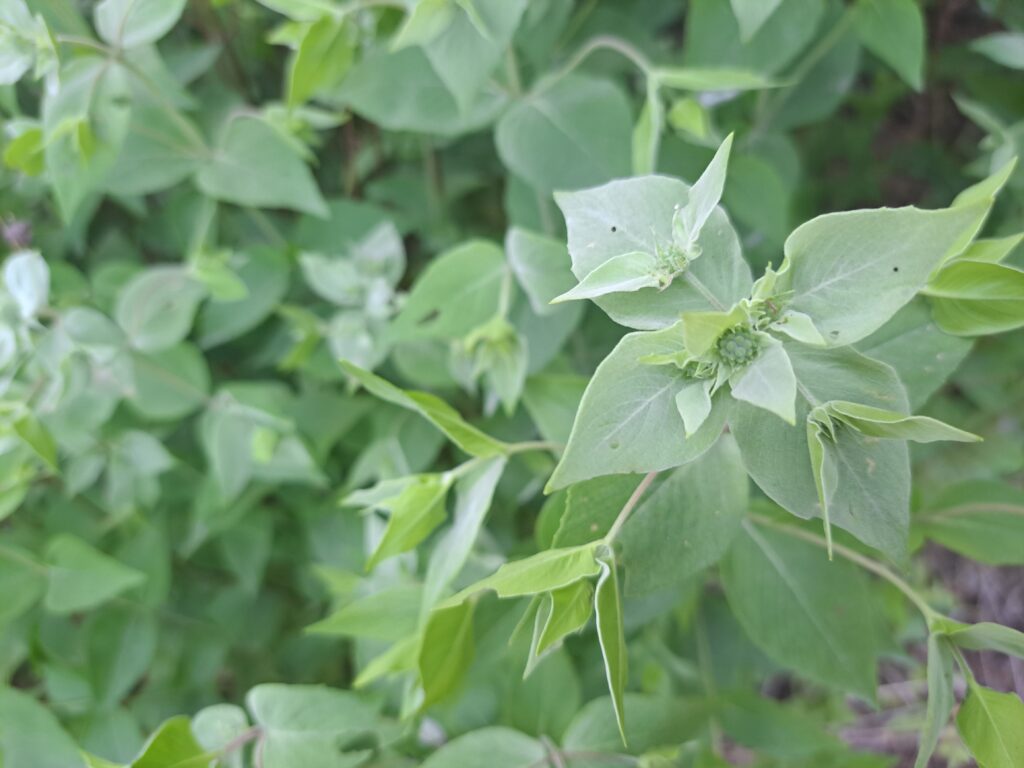
7. Mountain Mint
Many gardeners are reluctant to grow mint plants due to their invasive tendencies. But mountain mint is a North American native with a less aggressive growth habit and an exceptional ability to attract bees. Aside from its pollinator benefits, mountain mint is a treat for the eyes and its silvery-green leaves are ideal for brightening up drab garden beds.
Light needs: Full sun to part shade
Water needs: Average to low
Grow zone: 3 to 7
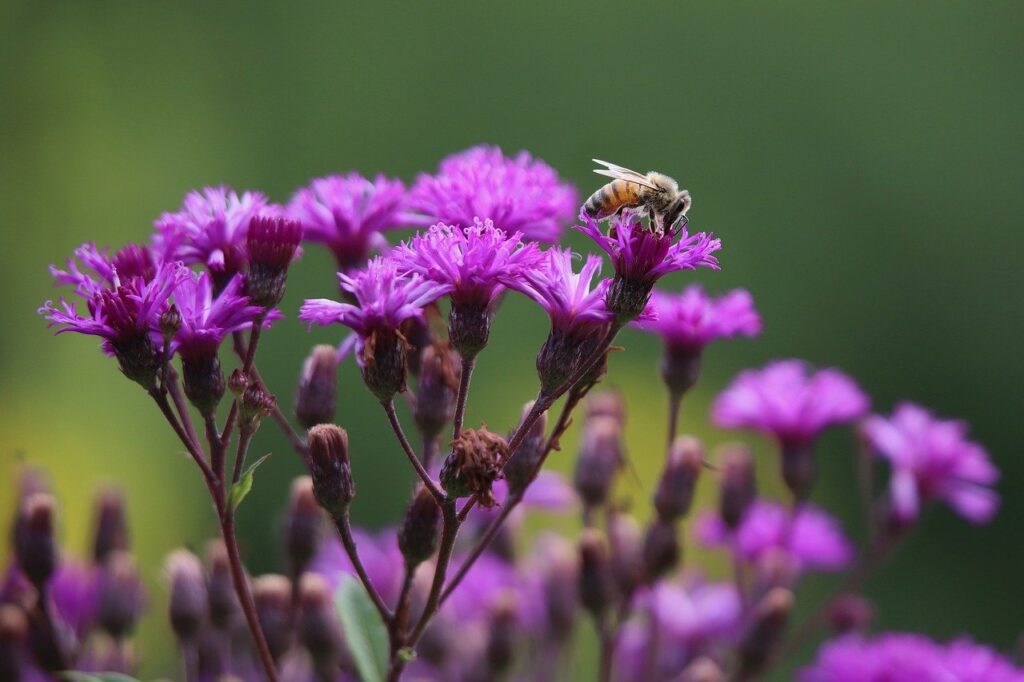
8. Ironweed
Legend has it that ironweed earned its name from its low maintenance needs and resilient nature — although there’s more evidence that this plant was actually named for its rust-colored seeds. Either way, ironweed is a fabulous choice for pollinators and its bright purple flowers have plenty of charm for humans too. In the wild, these plants grow in moist soil, so it’s no surprise that they make excellent rain garden plants!
Light needs: Full sun to part shade
Water needs: High to average
Grow zone: 3 to 9
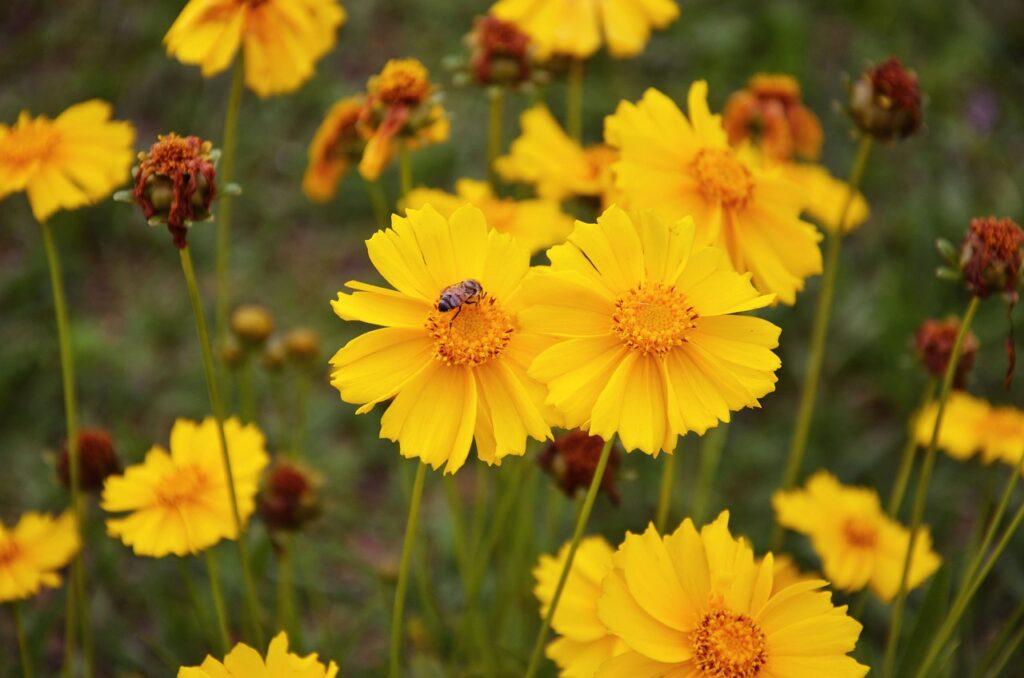
9. Coreopsis
Some fall flowering perennials can be a bit demanding, but coreopsis plants are totally beginner-friendly. These flowers come in both annual and perennial varieties, they sprout quickly from seed, pollinators love them and — with over 80 varieties to choose from — you can find a coreopsis to suit your style. Lanceleaf coreopsis is one of the most popular types for pollinator habitats, but dyer’s coreopsis is a top pick for crafters since it can be used to make a natural dye!
Light needs: Full sun
Water needs: Average to low
Grow zone: 4 to 9
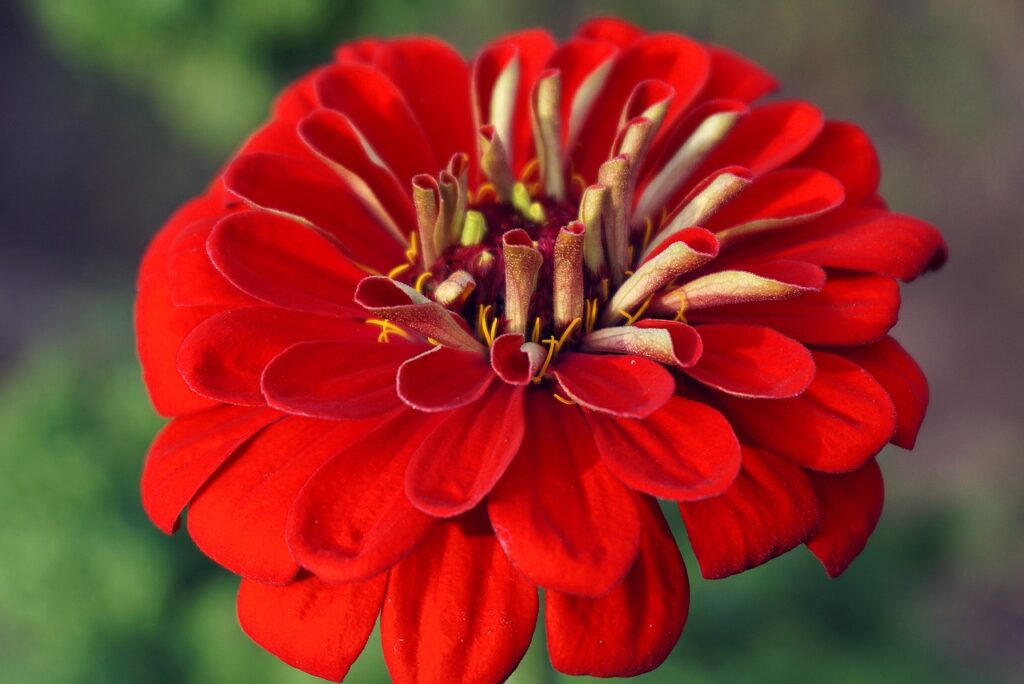
10. Zinnias
Zinnias are native to the southwestern United States and parts of Central America, but these plants can be grown as annuals in chillier spots. Just like marigolds, zinnias are often planted in vegetable gardens as companion plants, but they also make great cut flowers. Just make sure to choose single-bloomed zinnias as pollinators have a hard time feeding from zinnias with double flowers.
Light needs: Full sun
Water needs: Average
Grow zone: 2 to 11
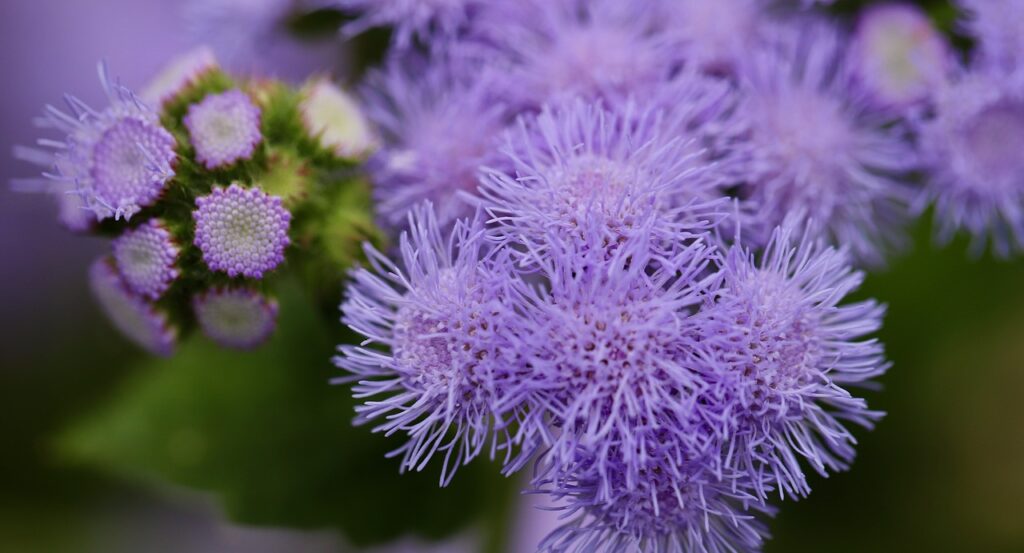
11. Blue Mistflower
Blooming from summer to fall, blue mistflower is often grown in cutting gardens and used in bouquets, but its nectar-rich blooms are a hit with pollinators as well. These plants can grow aggressively in some gardens, so you’ll want to give them plenty of space to spread and deadhead old blooms if you don’t want them to seed. Mistflower can be used to add a delightful pop of color to container gardens too!
Light needs: Full sun to part shade
Water needs: Average
Grow zone: 5 to 10
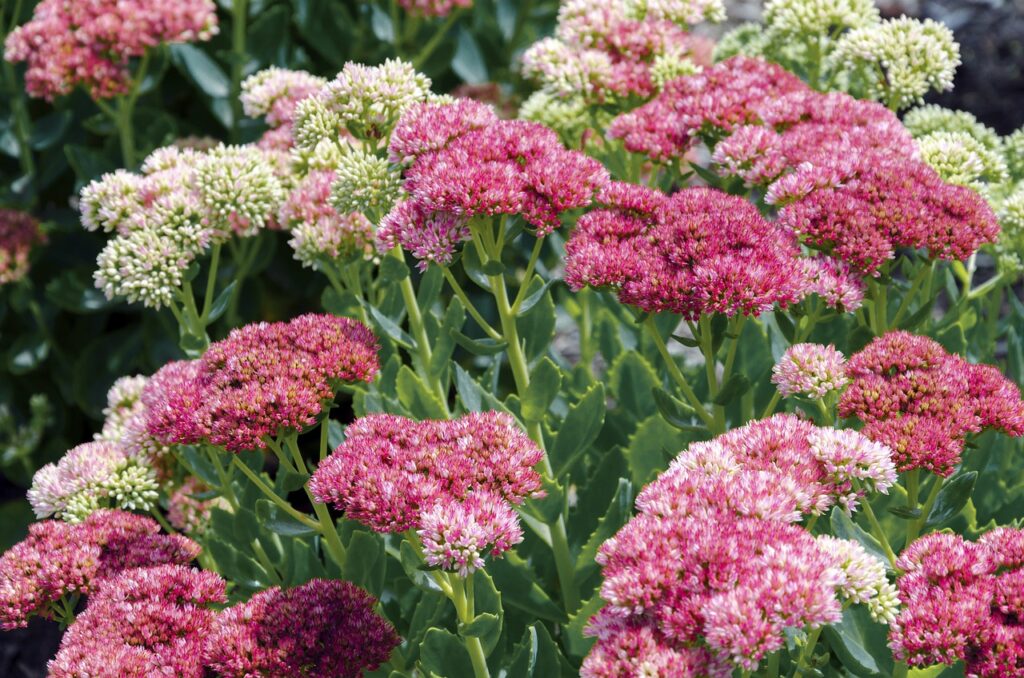
12. Sedum
Some types of sedums are native to Europe and Asia, but there are lots of native North American sedums. Shorter varieties are ideal for fall hanging baskets, while taller sedums can hold their own in mixed flower beds or planters. If you don’t deadhead their spent flowers in fall, dried sedum blooms will often stay on the plant through winter and bring extra interest to snowy gardens.
Light needs: Full sun to part shade (depending on variety)
Water needs: Low
Grow zone: 3 to 9
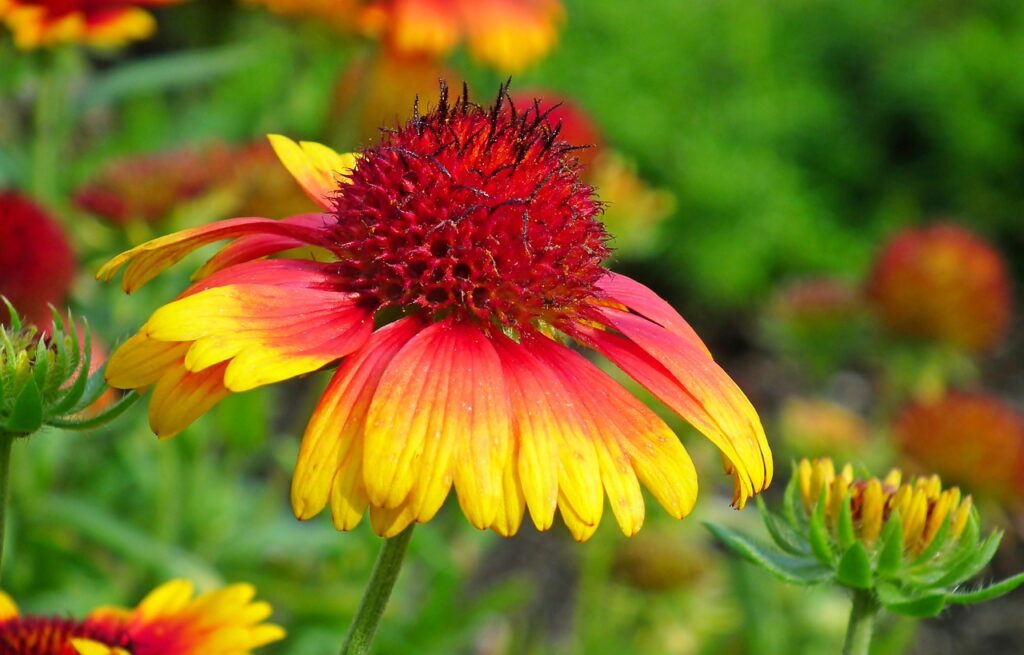
13. Blanket Flower
Blanket flower is a colorful plant with gold and red blooms and a versatile nature that can be used in tons of ways. These plants can be grown in containers, but they’re also ideal for mass plantings and they can even tolerate drought, heat, and some salt. When blanket flower is in bloom, butterflies are sure to be near, but songbirds also love their dried seeds.
Light needs: Full sun
Water needs: Average to low
Grow zone: 3 to 10
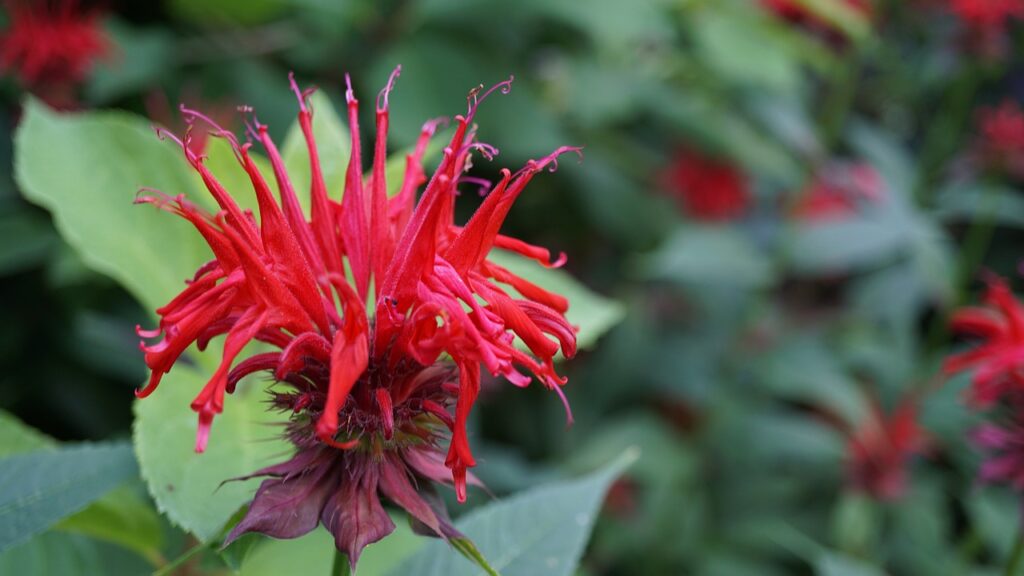
14. Bee Balm
Although bee balm does most of its blooming in summer, these plants can continue to flower into fall. After their spiky blooms fade, songbirds will flock to their dried seedheads, but you can also harvest these plants for their edible leaves and flowers. Like other mints, bee balm can spread, but you can keep it under control by deadheading the old flowers or by planting it in its own dedicated raised bed.
Light needs: Full sun
Water needs: Average
Grow zone: 3 to 9
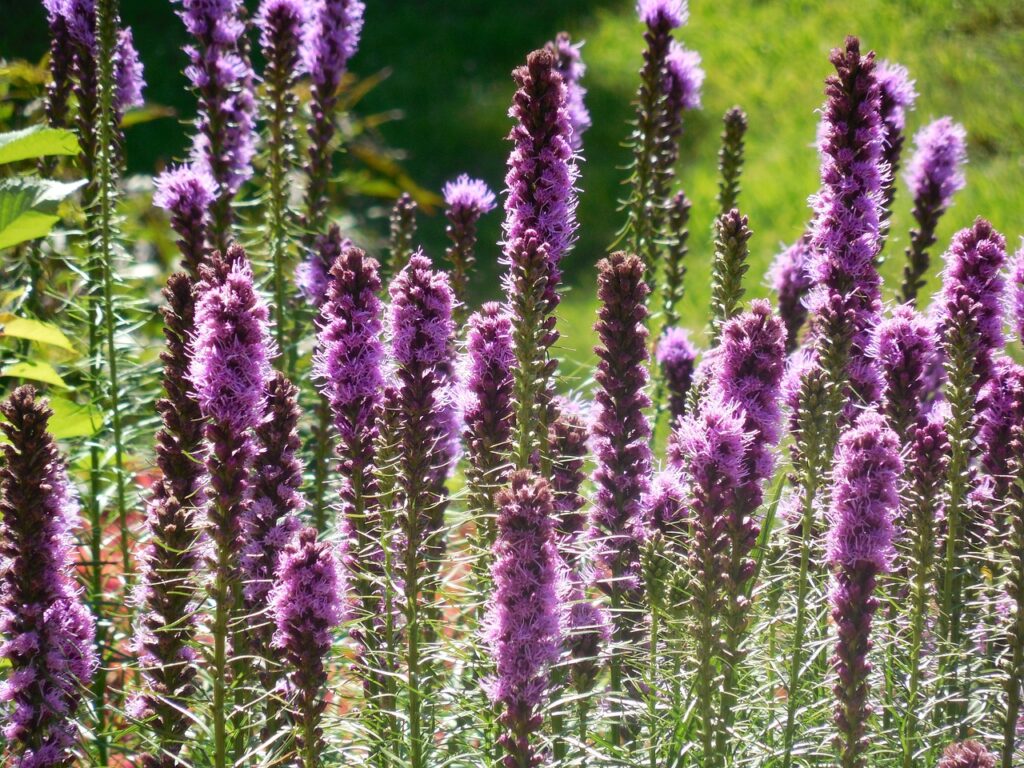
15. Liatris
There are at least 40 types of native liatris or blazing stars in North America and they can be found in almost every state. These plants usually have upright clusters of purple flowers, which are magnets for bees, as well as grassy leaves that provide shelter for wildlife and add movement to garden beds. You can grow these plants from seeds or corms, or you can plant them from nursery started plants if you want to get flowers even earlier!
Light needs: Full sun
Water needs: Average to low
Grow zone: 3 to 8
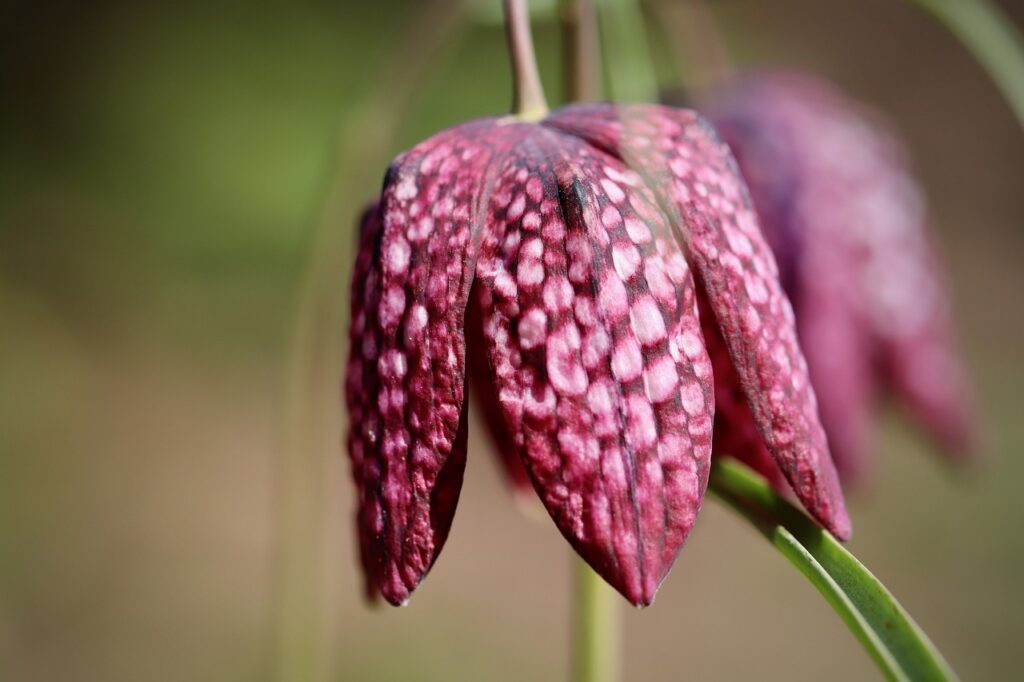
The Best Pollinator Bulbs for Fall Planting
Growing fall flowering plants in your garden is one of the best ways to help pollinators before winter. But if you want to create a pollinator habitat that serves pollinators through the changing seasons, you can also plant spring bulbs in autumn to feed future pollinators. Here are the fall bulbs you can plant right now to attract pollinators in spring!
- Alliums. Alliums’ orb-shaped flowers come in purples and white and they’re highly attractive to bees. Plant these bulbs from September to November.
- Anemone. Some anemones are native to Europe and Asia, but Canada Anemone is found throughout North America. Plant this bee favorite throughout fall.
- Winter Aconite. A very early bloomer, winter aconite provides much-needed food for the very first pollinators of spring. Plant it from late summer to early fall.
- Snowdrops. Another early bloomer, snowdrop flowers can push their way through snow! Just make sure to plant these bulbs before the ground freezes if you want to see them bloom.
- Quamash. Also known as wild hyacinth, this water-lover doesn’t mind moist soil. Plant quamash bulbs in fall or grow these plants from seed in spring.
- Virginia Bluebells. These color-changing plants produce pink buds than turn blue as the flowers age. Although Virginia bluebells can be planted in early spring, you’ll get more blooms if you plant them in fall.
- Bleeding Heart. A quirky plant for shady spots, bleeding hearts are especially beloved by hummingbirds and butterflies. Plant them before the ground freezes for spring blooms.
- Crocus. Small, cup-shaped crocus flowers come in cheery shades of purple, white, and yellow and they’re ideal for mass plantings. For best results, plant crocus bulbs 6 to 8 weeks before you expect a hard frost.
- Fritillaria. Many pollinators love fritillaria, but they’re especially favored by bumble bees. Plant these bulbs from September to October in most areas, or as late as mid-December in warm climates.
- Siberian Squill. Low-growing Siberian squill adds a pretty pop of blue to gardens and it’s always popular with bees. Squill can be planted throughout fall as long as the ground isn’t frozen.
- Trillium. A woodland favorite, trillium is an early bloomer but it grows slowly. Plant trillium rhizomes from late summer to fall and make sure to source rhizomes from reliable sellers that don’t harvest trilliums from the wild.
- Trout Lily. Another spring ephemeral, trout lilies are popular with bees and their speckled leaves are said to resemble the scales of a trout! Plant trout lily bulbs as soon as you receive them in fall.
